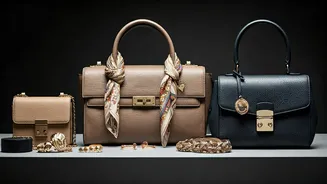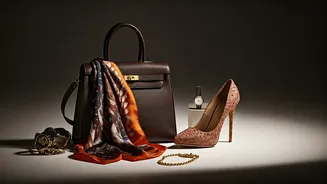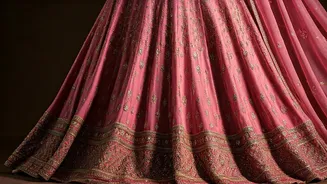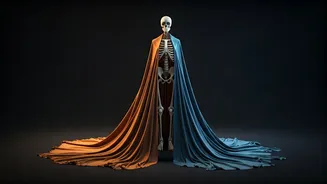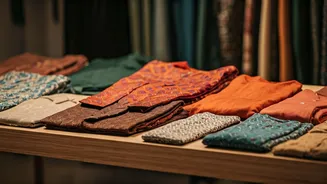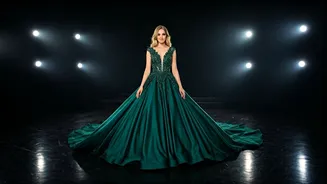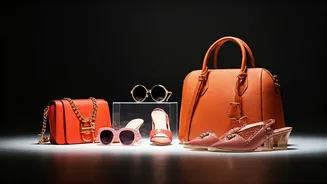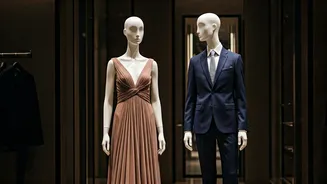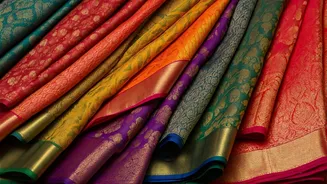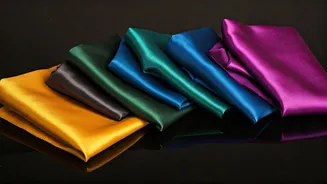Fashion's Everlasting Cycle
Fashion, at its core, is a cycle of innovation, adoption, and reinterpretation. Trends don't simply vanish; they often resurface with fresh twists, reflecting
how past styles influence current designs. The influence of history, art, and societal movements can be observed in the ever-changing fashion trends. Designers draw inspiration from different times and places, blending vintage aesthetics with contemporary sensibilities to create new looks. This cyclical nature ensures that fashion remains interesting, offering something new while paying tribute to its rich past. Each season, the wheel turns, presenting fresh interpretations of past trends. Fashion showcases the continuous dialogue between the past, present, and the future. By observing this continuous evolution, we gain a deeper appreciation for the art of fashion.
The Designers' Influence
Designers play a significant role in determining what is 'in' and 'out'. Their vision and creativity drive the fashion industry. They craft collections that often reflect their personal ideologies, artistic expressions, and aspirations. These collections are then presented on runways, setting the direction for upcoming trends. Designers' influence also extends to the way consumers perceive and interact with fashion. They frequently dictate the use of fabrics, colors, and silhouettes. Additionally, designers constantly explore innovative techniques and materials to push the boundaries of fashion. With each collection, designers encourage new dialogues and challenge existing norms. They don't just create clothes; they tell stories, express values, and, at their best, initiate a change in how people experience their appearance.
Trends for Everyone
Fashion trends are no longer restricted to a select few; they're increasingly accessible to diverse populations. While high-fashion shows continue to set the tone, trends swiftly trickle down to fast-fashion retailers and online platforms, making them affordable for various income levels. Additionally, social media has democratized fashion, allowing individuals to share their styles and influence trends. Bloggers, influencers, and regular people actively participate in the spread of fashion concepts, influencing how trends evolve. The inclusivity of fashion is further enhanced by body-positive campaigns, size-inclusive lines, and gender-neutral designs. This democratization promotes individual expression and makes the fashion world a richer and more multifaceted landscape, proving fashion's widespread influence.
Fashion and Identity
Fashion is a very potent form of self-expression; it helps people present their identities to the world. It goes beyond the basic function of clothing; it's a way for people to show their personal tastes, cultural affiliations, and even political convictions. One's attire often communicates volumes about personality, values, and group memberships, whether it's the choice of specific colors, clothing styles, or accessories. The ability to utilize fashion in this way helps people form connections, build communities, and assert their place in society. Fashion's role as a tool for self-discovery is especially prominent among young people, who frequently experiment with various styles to form a unique identity. Ultimately, fashion empowers individuals to tell their stories.
Cultural Reflection
Fashion mirrors and reflects the broader cultural context. Every era has its own distinct fashion that captures the spirit of its time, capturing the dominant social, political, and economic conditions. For instance, the post-World War II era saw the rise of the 'New Look', symbolizing a return to luxury and elegance after years of austerity. Furthermore, fashion is often a medium of social change, with trends reflecting societal shifts. Fashion is not just about clothes; it's a form of visual communication that mirrors our values, experiences, and aspirations. By looking at fashion trends, we gain deeper insight into our history, society, and ourselves, understanding the underlying cultural currents that shape how we dress and view the world.
